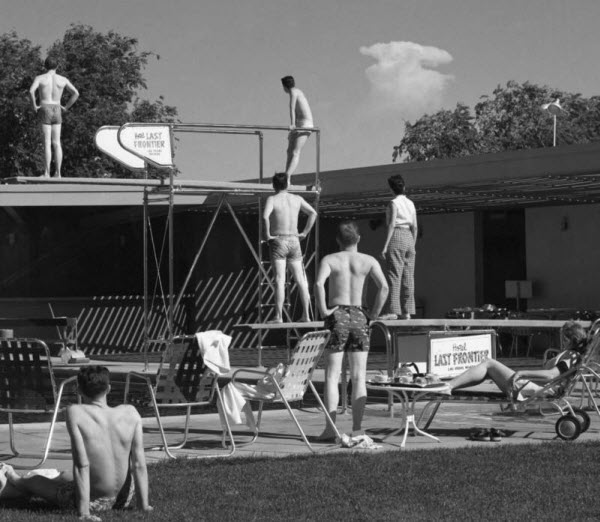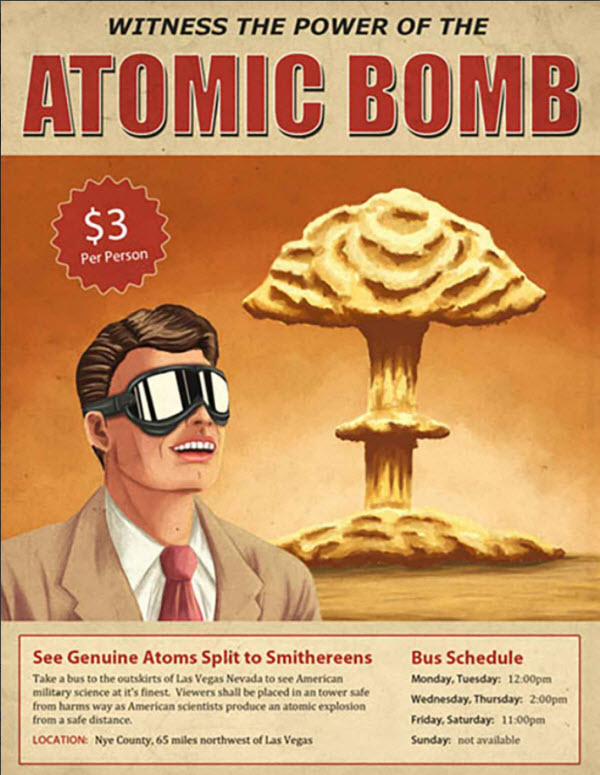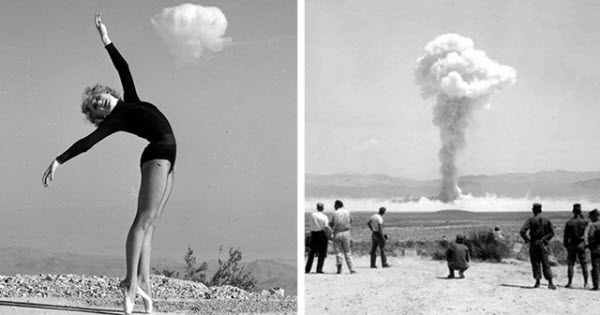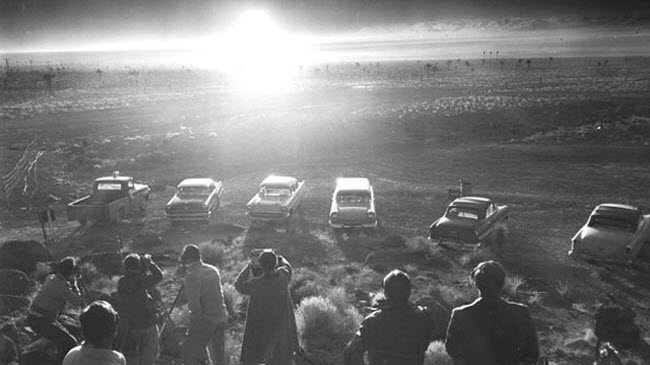During the Cold War, the fear of nuclear annihilation was at its peak, especially in its early years, affecting the populations of the two superpowers, the United States and the Soviet Union. This fear was vividly illustrated by images of school children being taught how to protect themselves from nuclear attacks and citizens building underground shelters in their backyards capable of withstanding nuclear blasts. Despite the widespread panic, this era had a surprising silver lining: some Americans turned the nuclear arms race into a lucrative venture known as atomic tourism.

In 1951, the U.S. government conducted its first nuclear tests in a remote desert area in Nevada, 65 miles from Las Vegas. Despite the site’s isolation, the nuclear explosions were visible from considerable distances, even as far as San Francisco in neighboring California. At that time, Las Vegas was not the tourist hub it is today. The choice of the Nevada desert for nuclear testing was partly due to the city’s relatively small population (less than 40,000). Yet, true to the American spirit of commercial enterprise, property owners in Las Vegas saw an opportunity. They realized people would pay to witness these nuclear tests and enjoy them from a safe distance, whether from a hotel or casino. The promotional pitch capitalized on the thrill of being close to such deadly power while remaining unharmed.

Visitors were only required to come to Las Vegas, relax in a hotel, and watch the mushroom clouds created by nuclear explosions. Atomic tourism began to thrive, especially in hotels located in the northern part of the city facing the desert, where guests could view the tests unobstructed. The craze became so pervasive that even the name of a local restaurant was changed from “Virginia Café” to “The Atomic Café,” which served “atomic cocktails” that patrons enjoyed while watching the nuclear blasts from the café’s rooftop. One casino even crowned a showgirl with the title “Miss Atomic Bomb,” while another casino offered “Dawn Bombs” performances, featuring rock concerts by Elvis Presley, dubbed the only “atomic-powered” singer. The city became so accustomed to these events that it published test schedules in advance, allowing thrill-seekers to find the best vantage points for viewing and photographing the explosions, often from elevated spots like Charles Town Mountain, a short drive from Vegas. These trips included bus rides, meals, drinks, and, of course, protective eyewear.
The booming atomic tourism industry, bolstered by federal funding and the jobs created by the Nevada test site, led to a dramatic population increase in Las Vegas within a decade. One casino owner even claimed that the best thing that ever happened to the city was the atomic bomb.

However, like all things, this era came to an end. In 1963, the United States imposed a ban on above-ground nuclear tests. Despite this, underground testing continued, with over 900 detonations by 1992. A comprehensive survey of the site revealed the negative effects of radiation on soldiers and nearby residents, prompting a shift of all tests to more isolated locations. This effectively ended the atomic tourism era in Las Vegas. Today, with the known dangers of nuclear radiation, it seems unthinkable for families to visit test site areas and watch nuclear explosions. Yet, modern “atomic tourists” still visit the Nevada desert to see a 390-meter crater left by a test from the 1960s and remnants of “Doom Town,” a mock city destroyed by an atomic bomb to test how an American city would withstand a real nuclear attack.
